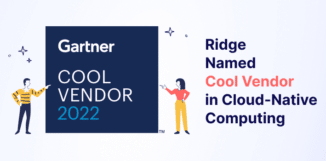Companies of all sizes collect data to enhance customer experience and make better decisions. However, as customer expectations and competition in the business world are rapidly increasing, traditional data collection methods are not enough.
Companies worldwide now collect big data to understand customers’ behavior, habits, and preferences better. Big data also helps businesses improve operations and personalize marketing campaigns. But no matter how much data organizations collect, it won’t be of any use until they process and analyze it using the right tools.
Storing, processing, and analyzing big data requires a lot of storage and computational capacity, which traditional IT systems and methods can’t provide. This is where businesses need cloud computing technology.
Cloud computing offers several benefits and big data solutions for different industries, including IT, health, automotive, retail, and more. Companies across the globe are already using cloud computing for data storage and analytics, disaster recovery, marketing, and more. But, how are cloud computing and big data-related, and what is big data in cloud computing?
In this article, we’ll provide a thorough big data analytics definition. We’ll also discuss key concepts, such as big data architecture, big data issues, big data strategies, big data and artificial intelligence, big data services, big data software, cloud big data technologies, cloud-native big data, big data in cloud computing features and issues, and more.
What Is Big Data?
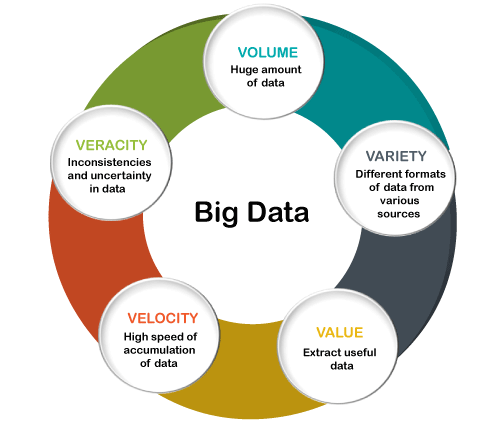
Image source
Big data means large data sets or a huge volume of data that is created and collected at a very high speed. Simply put, the big data definition is simply data that is highly complex and so large in size that traditional methods and tools cannot store and process it efficiently. A big data example is the New York Stock Exchange, which generates as much as one terabyte of data related to new trade every day.
Big Data Applications
Today, many industries worldwide make use of big data technology and big data platforms. These include healthcare, banking, media, entertainment, manufacturing, and more. The usage of big data in education is also becoming common.
Types of Big Data
Big data is mainly available in two forms, structured and unstructured.
- Structured data comprises the data already available in the organization’s databases and spreadsheets. This type of data is mostly numeric.
- Unstructured data is usually human-driven data, such as the information collected from customers’ comments on social media, product purchases, questionnaires, personal apps, etc. Since this type of data is unorganized and available in different formats, it needs modern tools for proper processing.
However, collecting big data is just the first step. You need both big data and analytics to gain actionable insights. So, what is big data analytics?
Big Data Analytics
Big data analytics means examining or analyzing big data using big data platforms and big data analytics tools. It includes diagnostic, descriptive, perspective, and big data predictive analytics.
Big data analysis helps businesses improve their processes and operations, streamline resource management, understand customer expectations better and optimize product development. Simply put, with proper big data management, big data strategy, and analysis, businesses can make better decisions. Businesses can also use the services of big data companies to make sense of their data. If you want to learn more about this topic, you can read our article on cloud data analytics.
Big Data Challenges
Big data storage is one of the major challenges that companies face because it requires a huge storage space. Preparing and processing big data are also difficult because of their complexity. Additionally, organizations have to keep up with new big data tools as different and more efficient big data technologies emerge with time.
Cloud computing is the solution to most of these problems.
But, what is the role of cloud computing in big data, how does cloud computing help us analyze big data, and what is big data cloud computing? We’ll discuss the relationship between big data and cloud computing next.
Big Data and Cloud Computing
The cloud and big data analytics are often used together. This is because big data requires huge computational power and storage. Cloud computing offers on-demand storage, computation resources, and tools to store and analyze big data. Hence, big data cloud computing and big data cloud analytics are becoming increasingly popular.
The rise of big data on cloud computing has made the process of analyzing big data more efficient. Businesses can choose from three types of cloud computing services, IaaS, PaaS, and SaaS, for cloud-based big data analytics. These services are available on a pay-per-use or subscription basis, which means users only pay for the services they use.
Cloud analytics essentially means storing and analyzing data in a big data cloud instead of on-premises systems of the organization. This includes any type of data analytics that is performed on systems hosted in the cloud, including big data analytics.
Big Data Analysis In Cloud Computing
For big data analytics in cloud computing, the data (both structured and unstructured) is gathered from different sources, such as smart devices, websites, social media, etc. The next step involves cleaning and storing this large amount of data. Companies then use big data cloud tools by big data cloud providers to process this data for analysis.
The big data cloud architecture below will help you understand cloud big data, cloud computing big data, and how cloud computing and big data are used together:
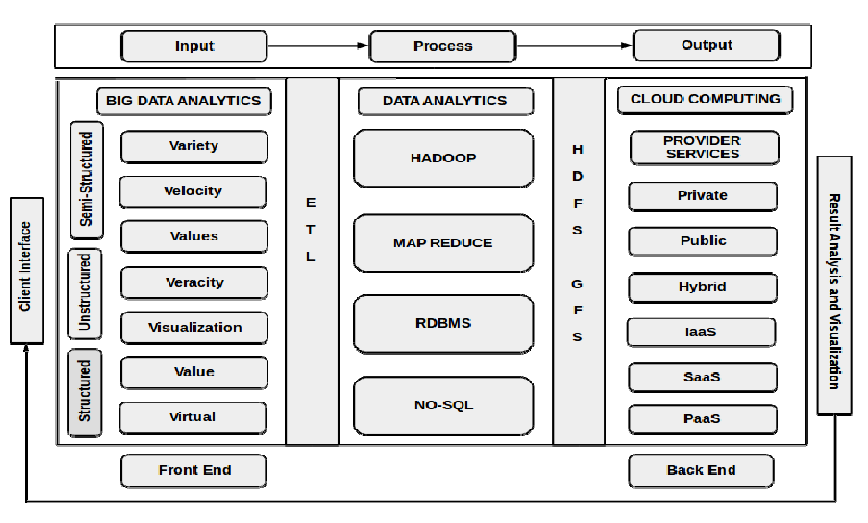
Image source
One of the most common cloud computing platforms for big data processing and analysis is AaaS. AaaS or Analytics as a service refers to a big data cloud solution that provides analytics software and procedures. It provides efficient business intelligence (BI) solutions that help organize, analyze, and present big data so that it is easy to interpret.
AaaS involves advanced data analytics technologies, such as machine learning algorithms, AI, predictive analytics, data mining, etc., to analyze data and show trends.
Big Data, Cloud Computing, and Internet of Things (IoT)
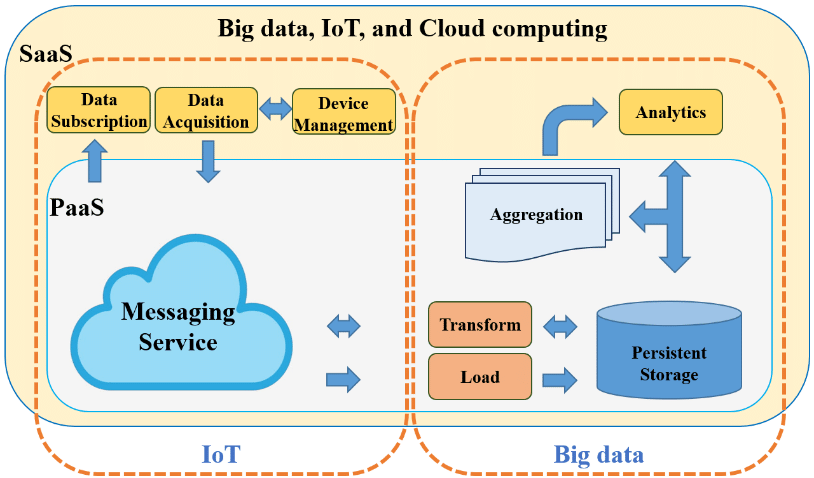
Image source
IoT, big data, and cloud computing are all closely related. Before we discuss the relationship between IoT, big data, and cloud computing, let’s first define IoT.
IoT is a system of connected smart devices, such as home appliances, sensors, and vehicles. IoT devices communicate and transfer data via the internet without any human intervention.
This modern technology offers several benefits, such as automated processes, reduced labor costs, waste reduction, enhanced service delivery, and more. So, how is it related to the cloud and big data?
IoT involves collecting real-time data all the time. For example, smart cities install IoT sensors throughout the city to collect real-time data related to traffic, lighting, etc. Similarly, for precision agriculture, sensors are placed in the field to examine soil conditions, temperature, and moisture. This large volume of data needs huge storage space and computational capacity that cloud computing can provide.
Big Data Deployment In Cloud
When it comes to big data deployment, organizations usually have three options: public, private and hybrid cloud.
Public Cloud
A public cloud is a cloud environment that multiple organizations share. However, the data and information of each company are isolated. In a public cloud, the third-party cloud service provider hosts and manages computing resources, hardware, and software. This is the most common cloud environment for storing and analyzing big data.
Private Cloud
Private cloud is another cloud computing model where the computing resources, hardware, servers, storage, etc., are dedicated to a single customer. This means that only one organization can use and access it. There are different types of private cloud, such as virtual private cloud, hosted private cloud, and managed private cloud.
Hybrid Cloud
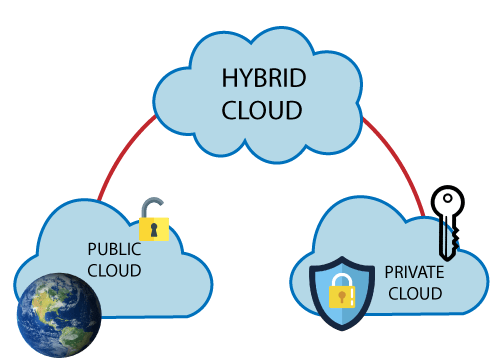
Image source
A hybrid cloud refers to the cloud model that is a combination of on-premise infrastructure, public cloud, and private cloud. Businesses usually use a hybrid cloud to reap the benefits of both private and public clouds. If you are interested in learning even more, we also have a great article on multi-cloud vs. hybrid cloud.
Ridge Cloud
By extending the public cloud model, Ridge Cloud unleashes the full potential of big data analytics. Its integrated distributed platform enables utmost control and ease of use for companies looking to integrate cloud computing into their big data strategies. Additionally, Ridge’s Anywhere Cloud nature allows for companies with specific regional data compliance requirements to deploy where needed.
Advantages of Big Data in Cloud Computing
There are several benefits of big data in the cloud and big data analytics cloud:
Scalability
Cloud computing for big data offers flexible, on-demand capabilities. With big data cloud technology, organizations can scale up or scale down as per their needs. For example, organizations can ask cloud-based big data solutions providers to increase cloud storage as the volume of their data increases. Businesses can also add data analysis capacity as needed. Big data cloud servers help businesses respond to customer demands more efficiently.
Higher Efficiency
Cloud computing for big data analytics provides incredible processing power. This makes big data processing in cloud computing environments more efficient compared to on-premise systems.
Cost Reductions
When it comes to big data on-premise vs. cloud, another major difference is cost. In comparing big data cloud vs. on-premise, on-premises systems involve different costs, such as power consumption costs, purchasing and maintaining hardware and servers, replacing the hardware, etc.
However, with cloud and big data cloud technologies, there are no such costs because the cloud service providers are responsible for everything. Additionally, cloud services are based on a pay-per-use model, which further reduces the cost.
Disaster Recovery
Data of any size is a valuable asset for organizations, so it’s important not to lose it. However, cyber-attacks, equipment failure, and power outages can result in data loss, especially if you’re using an on-premise system. On the other hand, a big data cloud service replicates data to ensure high availability and security. Hence, cloud computing for big data helps organizations recover from disasters faster.
If you want to know the differences between cloud and on-premise in detail, check out our article on cloud vs. on-premise.
Challenges of Big Data in Cloud Computing
Some of the key big data challenges in IoT and cloud computing include:
Big Data Cloud Security
Security issues associated with big data in cloud computing are usually a major concern for businesses. Big data consists of different types of data, including the personal data of customers, which are subject to data privacy regulations. As cyber-attacks are increasing, hackers can steal data on poorly secured clouds.
Requires Internet
You need an internet connection to access data in the cloud and perform analytics.
If you want to know more about big data challenges in the cloud, check out the study Big Data and Cloud Computing: Innovation Opportunities and Challenges
Frequently Asked Questions (FAQs)
How is big data related to cloud computing, and what is big data cloud?
Big data requires huge storage and computational capacity that traditional systems and tools cannot provide. Cloud computing provides on-demand storage and computing resources that make big data processing in cloud environments quick and efficient. Applications of big data in cloud computing include big data storage, processing, and analysis.
How to manage big data in cloud computing?
Managing big data in cloud computing environments is easier compared to on-premise systems because of the efficient tools and resources that the cloud offers. A big data cloud platform provides you with modern tools for big data analytics. Additionally, cloud big data technologies are more cost-effective than on-premise systems.
How are cloud, IoT, and big data related?
IoT sensors involve large volumes of data arriving in real-time, which is also called big data. And analyzing big data using cloud computing is more efficient.















